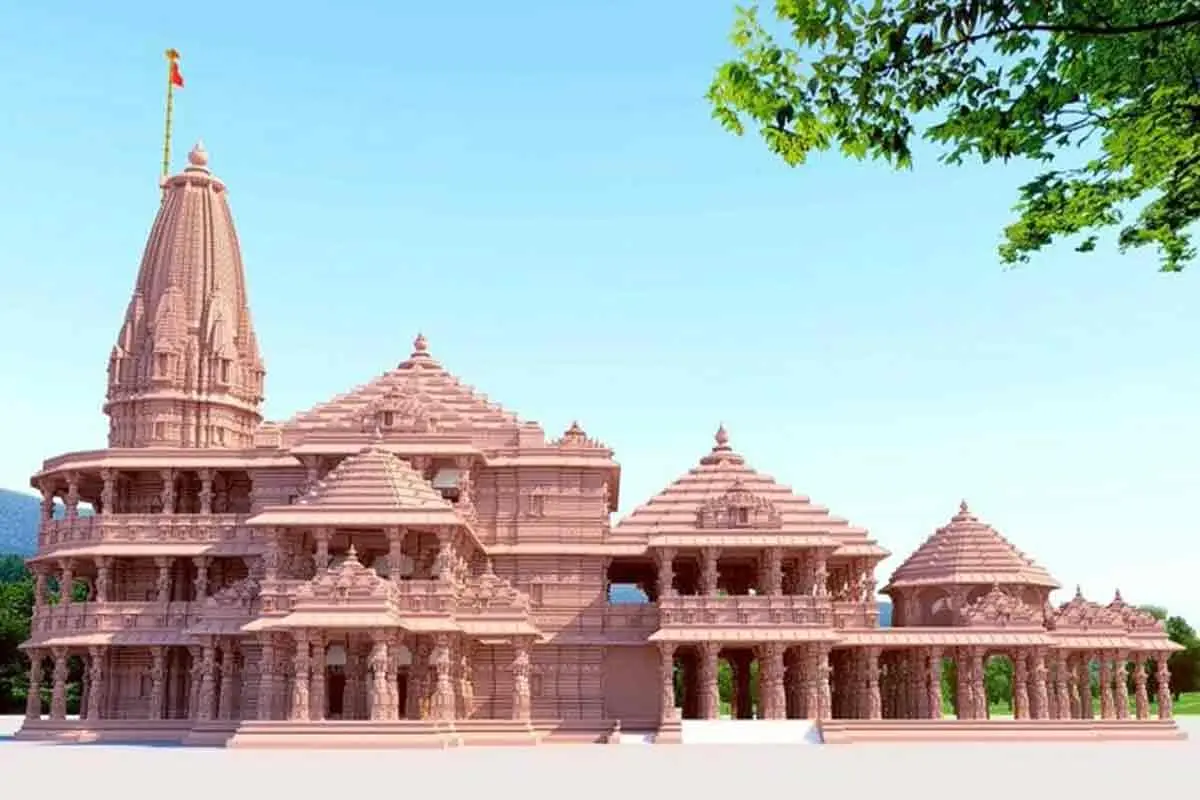
The Ram temple complex has been designed by Chandrakant Sompura, 81, and his son Ashish, 51. The temple is being built in the Nagara style of temple architecture.
Nagara Style
In northern India, during the late Gupta period in the fifth century CE, the Nagara style of temple architecture first appeared. It is compared to the Dravida style, which also originated in southern India during that same period.
The term “Style” is, however, a debated term.
“Though they are referred to as ‘ styles,’ Nagara and Dravida encompass extensive regions and historical periods,” Adam Hardy observed in his renowned book The Temple Architecture of India (2007). He refers to the two as “the two great classical languages of Indian temple architecture” rather than “styles.”
“‘Languages’ seems a [more] suitable term, in that each is a system providing a ‘vocabulary’, a kit of parts, along with a ‘grammar’ which regulates the ways of putting the parts together,” he wrote.
Distinguished by “Towering Shikhara”
Nagara temples are built on a pedestal or plinth, with the sanctum sanctorum (Gribha Graha)- where the deity or Idol of God resides. The sanctum sanctorum is the most sacred part of the temple. The most distinguishable part of the Nagara-styled temple is the Garbha Grah. towering over which is the Shikhara (resembling a mountain peak).
As per the Hindu tradition and cultural beliefs, Shikharas are the man-made representation of the natural cosmological order.
“Meru, Mandara, and Kailasa are the first three names amongst the twenty types of temples described in the early texts … all three are the names of the Mountain, which is the axis of the world,” Stella Kramrisch wrote in her pioneering work, The Hindu Temple Vol I (1946). “In these names rises the temple, the image, aim, and destination of this world edifice.”
The sanctum santorum/Garbha Griha is usually surrounded by a circulatory passage in Nagara-style temples, and one or more mandaps are located along the same axis.

– Representative Image
Nagara architecture’s five modes
The appearance of a shikhara and its application in temple architecture vary greatly depending on the period and region. Hardy classifies the architecture of Nagara temples into five categories: Valabhi, Phamsana, Latina, Shekhari, and Bhumija.
Scholars have categorized the first two as belonging to the Early Nagara Style. The Valabhi is initially a masonry representation of the familiar barrel-roofed [wooden] structure, either simple or with aisles, found in chaitya halls, which are prayer halls typically connected to Buddhist shrines. The Phamsana is created by formalising multi-eave towers and stacking slabs on top of each other, according to Hardy.
The Latina, a shikhara with four equal-length sides and a single, slightly curved tower, originated from these models. According to Hardy, “the mode originated in the heartland of the Guptas, was fully curved by the early seventh century, and spread throughout the entire breadth of northern India during that century.” He wrote, “It was the pinnacle of Nagara temple architecture for three centuries, literally.”
Composite Latinas emerged in the tenth century, which is when the Shekhari and Bhumija styles first appeared. The Shekhari form is echoed by attached sub-spires or spirelets. These might span the majority of the shikhara’s face and come in multiple sizes. On the other hand, the Bhumija has tiny spires that form a grid-like pattern on each face. These spires are arranged in both horizontal and vertical rows, reaching the top. The Latina’s curve is less noticeable when the actual shikhara resembles a pyramid.
These classifications are simplified scholastic classifications. The temple architects of yore simply followed and kept on innovating the existing design traditions and added to the styles that they saw in the world around them and over time, many other trends came into being. These architects didn’t choose to stick to only one style of building they innovated their styles with time.
With the tallest shikhara always being on the top of the Garbha Griha, temples even contained multiple shikhara
Comparison with the Dravida style
The Dravida counterpart to the shikhara is the vimana. There exists, however, a fundamental difference.
The most visually arresting architectural features in a temple complex are the great gatehouses, or gopurams, which are usually larger than the vimanas in Dravida-style temples. Furthermore, the term “shikhara” in southern Indian architectural sources only pertains to the vimana’s dome-shaped crowning cap.
There is a boundary wall that points out a unique feature of the Dravida-style temples. A few Nagara-style temple complexes are lined with distinctive boundary walls that are a part of the temple’s design.
There is no gopuram has been built in the Ayodhya temple, although there is a 732m long wall that runs around the temple compound.
To read more such news, download Bharat Express news apps


















